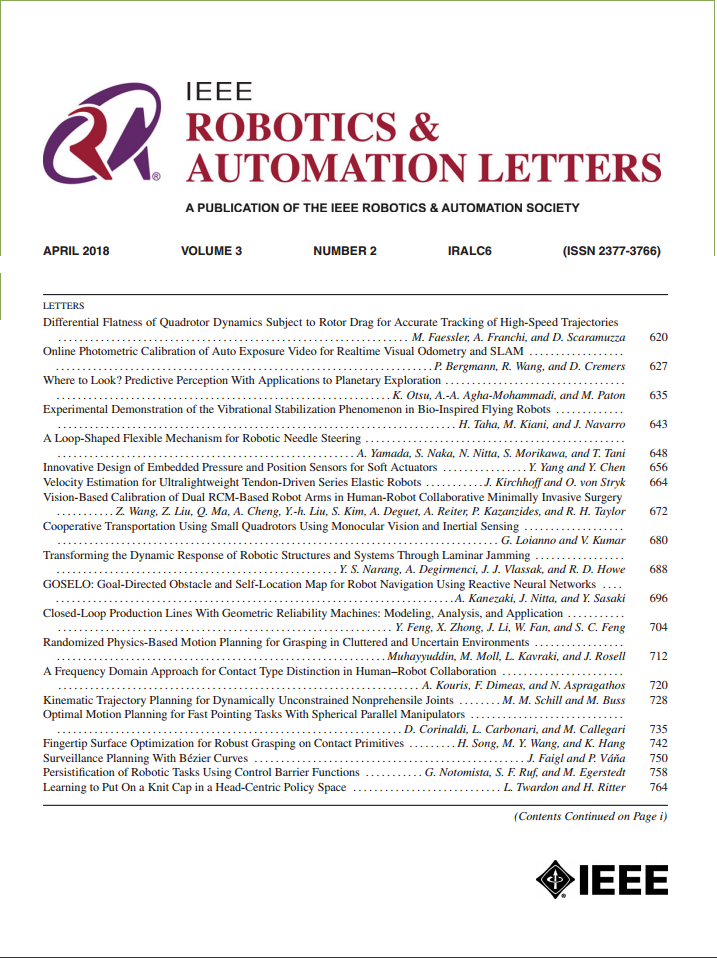Robust Neuromorphic Method for Tactile Recognition of Material Surfaces
IF 4.6
2区 计算机科学
Q2 ROBOTICS
引用次数: 0
Abstract
Tactile recognition enables humanoid robots to interact naturally and intelligently. Neuromorphic models, known for their robustness, efficiency, and low energy consumption, offer significant potential. Existing approaches primarily focus on normal force, neglecting other signals. Moreover, the imprecise anti-noise characteristics of tactile-oriented neuromorphic models hinder their optimal performance. To address this, we propose a neuromorphic approach that fuses tactile signals for material recognition, based on mechanoreceptor physiological responses and finger-surface interaction patterns. The method incorporates four models, each handling normal force, tangential force, velocity, and acceleration. Robustness is systematically evaluated at three levels: (1) analyzing the mean difference in spike firing rates for each model; (2) comparing noise resistance through the changing rate of membership degree; and (3) assessing the impact of signal-to-noise ratio on recognition accuracy. The results show that the method's resilience to blue, white, and pink noise decreases in this order. Compared to feature extraction methods, the neuromorphic approach demonstrates superior robustness. This research provides valuable insights for guiding multimodal tactile fusion recognition.求助全文
约1分钟内获得全文
求助全文
来源期刊

IEEE Robotics and Automation Letters
Computer Science-Computer Science Applications
CiteScore
9.60
自引率
15.40%
发文量
1428
期刊介绍:
The scope of this journal is to publish peer-reviewed articles that provide a timely and concise account of innovative research ideas and application results, reporting significant theoretical findings and application case studies in areas of robotics and automation.
 求助内容:
求助内容: 应助结果提醒方式:
应助结果提醒方式:


